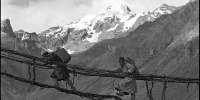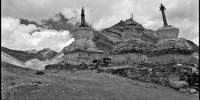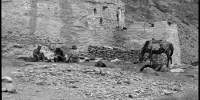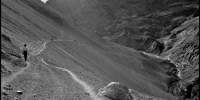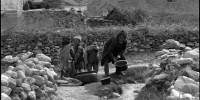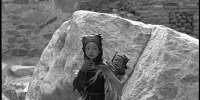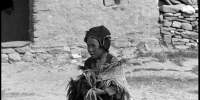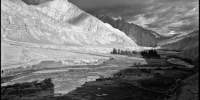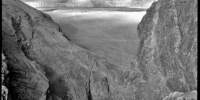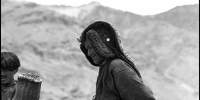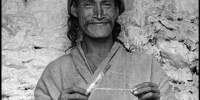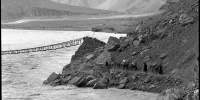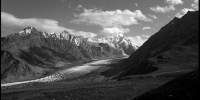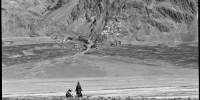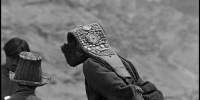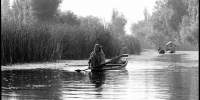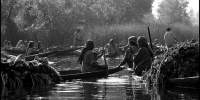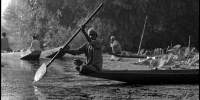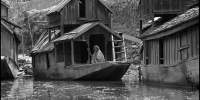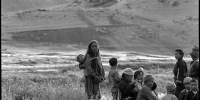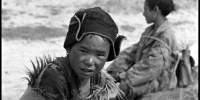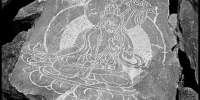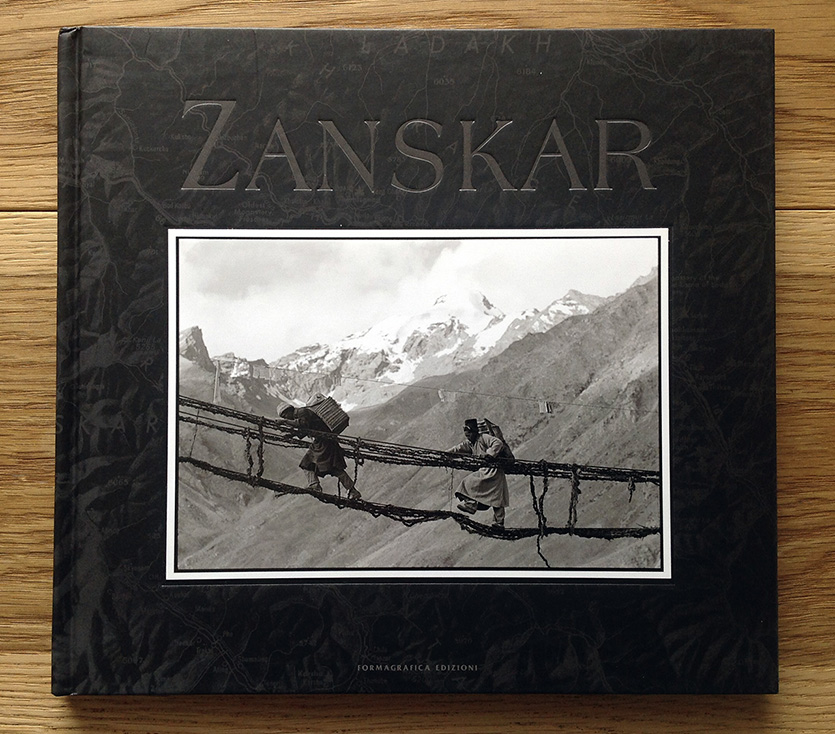
-
Zanskar - Trekking in the heart of the Himalayas
Introduction by Guido Fino and Elisabetta Valtz
..all experience is an arch wherethro’
Gleams that untravelled world, whose margin fades
For ever and for ever when I move”(from “Ulysses”, Alfred Tennyson)
Hidden in the heart of the Indian Himalayas, on the southern border of Ladakh, 12,000 inhabitants, around fifty villages at an average altitude of 3,600 metres and a handful of monasteries over three valleys run through by rivers which descend from the sacred Kailash, surrounded by glaciers and peaks which rise to over 6,000 metres.
This is the remote and rugged Zanskar, an ancient, tiny Buddhist kingdom, still the homeland of one of the most isolated populations on the planet. This was the destination of our Himalayan journey back in 1977. Opened only one year earlier to foreigners, Zanskar was still immersed in an almost total isolation from the world, due to the lacking of routes connecting the area with the valley of Leh, and offered unlimited opportunities for trekking and discoveries, encounters and true emotions, in one of the most impressive Himalayan landscapes and in one of the last untouched enclaves of Tibetan culture.
With the exclusive support of a geological map to plan a rough route , and of epistolary contacts with an Indian guide/interpreter from Srinagar, we set off with tents and sleeping bags in our rucksacks, and with a compass and altimeter as our only technological aids. We had no idea that we would be undergoing what, today, we can consider not only as an extraordinary experience of extreme trekking (380 kilometres on foot in fifteen days with passes at over 5,000 meters), but also a journey of discovery in places were religion, spirituality and ways of life have remained unchanged since the Middle Ages.
We would travel over ancient paths known only to the locals, halfway up the mountains over vertiginous crevasses, cross rivers on fragile suspended bridges, wade through swollen torrents and rest in villages meeting the mountain people, the wonderful Zanskar–pa, who live in one of the most hostile natural environments in the world, overcoming the hardship of life through their native and profound spirituality. The old and the young with their sun–baked skin, women with red cheeks and shining black hair, wearing the peyrac studded with silver, coral and turquoise, working in the barley fields, shepherding the yaks and goats, intent on gathering wood or making offers to Buddha, and swarms of children with their younger siblings on their backs running out from the houses to greet us with smiles as soon as they spotted us, curious and shy at seeing us – the first foreigners to enter their villages.
We would ascend passes with breathtaking views over the Himalayan Range, accompanied by a silent monk on a pilgrimage to Leh, put up our tents in pastures dotted with chorten, share chapatis around the campfire with Rampa, an elderly Zanskari inhabitant who left his village to join us as a guide and scout because of his expert knowledge of all the paths and fords that he travelled in his annual crossing of the valleys to trade barley with sugar, rice and tea in Leh. We would drink Tibetan tea with the monks in the simple but lively monasteries hanging on to the slopes of the valleys as a protection for the villages. And after fifteen days of extenuating but exhilarating journey, begun in Srinagar and following on through the glaciers, gorges, rivers and starry skies we would see, from the path descending from the Ganda La, the Indus river running through the Leh valley, our journey’s ultimate destination.
The photographs taken along the route are, above all, a spontaneous and immediate reflection of the vast sum of emotions generated by the journey, by the meeting with people and the sublime nature of the landscapes. They also serve as a memory of what was shared during the walk with our three fellow hikers but, principally, they are an affectionate homage to the unforgettable and wonderful people of Zanskar.
After thirty years, in a world which is conveyed by the media as easily accessible to all, even in its more exotic aspects, this testimony of what was a true adventure in terms of discoveries, challenges and daily amazement when faced with the untamed reality of ancient and untainted purity, is aimed at all those who understand the most authentic sense of travel.
photos -
Zanskar - Viaggio nel cuore dell’Himalaya
introduzione di Elisabetta Valtz e Guido Fino
“… ogni esperienza è un arco al di là del quale
Splende quel mondo inesplorato, i cui confini
Sfumano perennemente davanti al mio cammino”.(da “Ulysses”, Alfred Tennyson)
Racchiuso nel cuore dell’Himalaya indiano, al confine meridionale del Ladakh, 12000 abitanti, una cinquantina di villaggi a un’altitudine media di 3600 metri, e una manciata di monasteri in tre valli aspre e remote percorse dai fiumi che scendono dal sacro Kailash, circondato da ghiacciai e vette che superano i 6000.
Questo è lo Zanskar, antico regno buddista, patria di una delle popolazioni ancora oggi più isolate del pianeta, e questa era la meta del nostro viaggio himalayano, nel lontano 1977. Aperto soltanto un anno prima agli stranieri, lo Zanskar era ancora immerso in un isolamento pressoché totale dal mondo; in particolare le alte valli, non collegate da strade alla valle di Leh, offrivano possibilità illimitate di trekking e di scoperte, di incontri e di emozioni in uno dei più impressionanti scenari himalayani e in una delle ultime enclave di cultura tibetana.
Ricorrendo esclusivamente alla cartografia geologica, per disegnare un itinerario di massima, e a contatti epistolari con una guida/interprete indiano di Srinagar, siamo partiti con tende e sacchi a pelo nei nostri zaini e – unici supporti tecnologici – bussola e altimetro. Non immaginavamo di andare incontro a quella che oggi possiamo considerare non solo una straordinaria esperienza di trekking estremo (380 chilometri a piedi in quindici giorni, con passi a oltre 5000 metri), ma un viaggio di scoperta in luoghi dove religione,spiritualità e modi di vita erano rimasti immutati dal medioevo.
Avremmo percorso sentieri antichi, noti solo ai locali, a mezza costa su vertiginosi strapiombi, attraversato fiumi su fragili passerelle sospese, guadato torrenti in piena e sostato in villaggi incontrando i montanari, i meravigliosi Zanskar–pa, che vivono in uno dei più ostili ambienti naturali del mondo, sempre ospitali, gentili e sorridenti, dai gesti quasi sacrali che rivelano un’innata e profonda spiritualità. Anziani e giovani dalla pelle cotta dal sole, donne dalle guance rosse e i capelli nerissimi coperti dal peyrac di argento, corallo e turchesi, nei campi di orzo, al pascolo con gli yak e le capre, intenti a fare legna o offerte a Buddha, e frotte di bambini con i fratellini più piccoli in spalla che arrivavano di corsa dalle case non appena ci avvistavano per incontrarci ridendo, incuriositi e intimiditi alla nostra vista, primi stranieri a entrare nei loro villaggi.
Avremmo scalato passi con viste mozzafiato sulle catene himalayane, accompagnati da un silenzioso monaco in pellegrinaggio verso Leh, piantato le tende nei pascoli punteggiati di chorten, condiviso chapati attorno al fuoco del campo con Rampa, l’anziano Zanskari che dal suo villaggio si era unito a noi come guida e scout, esperto conoscitore di tutti i sentieri e i guadi che lui solo percorreva nell’annuale traversata delle valli per andare a barattare orzo con zucchero, riso e tè a Leh.
Avremmo bevuto il tè tibetano con i monaci nei semplici ma vivissimi monasteri abbarbicati sui pendii delle vallate, a protezione dei villaggi. E dopo quindici giorni di estenuante ma esaltante viaggio, iniziato a Srinagar e proseguito fra ghiacciai, gole, fiumi e cieli stellati, avremmo visto, dall’alto del sentiero che scende dal Ganda La, l’Indo scorrere nella valle di Leh, meta finale del nostro cammino.
Le fotografie scattate lungo il percorso sono anzitutto una spontanea e immediata eco dell’immenso insieme di emozioni generate dal viaggio, dagli incontri umani e dal sublime naturale del paesaggio, e vogliono anche essere un ricordo di quanto condiviso lungo il difficile cammino con i nostri tre compagni, ma soprattutto un affettuoso omaggio alle indimenticabili e meravigliose genti dello Zanskar.
A trent’anni di distanza, in un mondo che i media rappresentano come facile ed accessibile a tutti, anche nei suoi aspetti più esotici, questa testimonianza di quella che è stata una vera avventura – nel senso di scoperte, sfide e stupori quotidiani davanti ad una realtà non addomesticata, quasi incredibile per la sua antica e intatta purezza – si rivolge a tutti coloro che comprendono il più autentico significato del viaggiare.
fotografie
